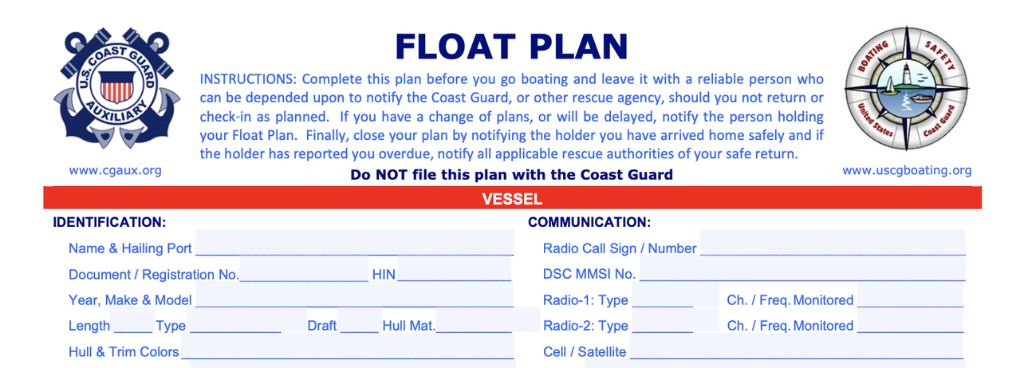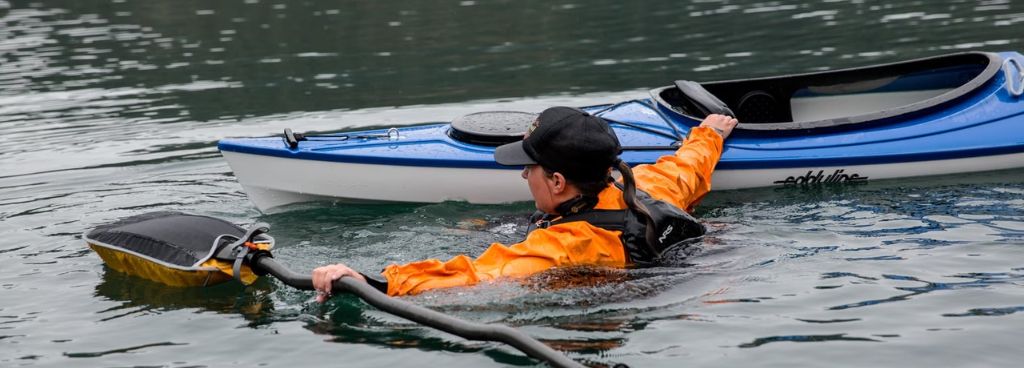Stories Worth Reeling In...
Last Updated on September 20, 2023
If you want to go out there fishing on your kayak alone, make sure to take an extra cup of caution! If something unexpected occurs to you while on the water, you’ll need the skills, knowledge, and safety equipment to deal with it.
I want to emphasize that kayaking alone is absolutely possible. There’s no reason why you can’t enjoy solitary kayak fishing like any other type of outdoor leisure. Just make sure you prepare properly!
That being said, our focus today will be on the top safety precautions for solo kayakers and other strategies to prepare for safe and fun solo kayak adventures. So let’s get started!
Table of Contents
The first step in solo kayaking fishing is to accept the reality that you can do it! Yes, preparation and abilities are required, but you must also have the confidence to believe that it is feasible.
Unfortunately, there is no exact suggestion for how many hours you should spend honing your kayaking skills before you can paddle alone. It all comes down to how comfortable you are with the location and conditions in which you are paddling.
The quick answer is yes. But only if the kayaker is properly prepared, adequately taught, and equipped. To put things into perspective, all water sports, whether genuine or perceived, include some element of risk, and kayaking is no exception.
Safety is critical to your ability to enjoy solo kayaking for many years to come. So it makes sense to start with strategies to keep yourself as safe as possible as a lone kayaker.

It doesn’t have to be with the US Coast Guard or any law enforcement agency, but someone should be aware of your planned paddle expeditions.
Sending a text message to an emergency contact can suffice. That communication should include information about where you are paddling and when you intend to exit the river.
When submitting a float plan to the authorities, give some identifying information about your kayak. This could include the color, manufacturer and model, serial number, customized stickers, or anything else that makes your kayak distinctive and personal.
You can paddle alone, but make sure someone knows where you’re going. Paddling alone is risky, and even expert paddlers might get into trouble. After completing your paddler’s safety course, you may be tempted to believe you can handle anything—and you may be correct or maybe not. Your safety must come first so make sure not to risk it alone.
What constitutes appropriate safety equipment varies according to the type of paddling you undertake. Users of the best sit-on-top kayaks, for example, do not need to carry a bilge pump and sponge, as they would with a touring kayak.
Still, the key is that you must have the appropriate safety equipment for the type of paddling you are doing. It will give you a lot of confidence as a single paddler to know that you are prepared if things don’t go as planned.
At the very least, you should keep a waterproof first-aid kit in your kayak. If you currently have a good first-aid kit that isn’t waterproof, you can store it in a dry bag instead of purchasing a new one.
Certain key pieces of kayak safety equipment should be stored in your kayak’s cockpit or attached to the deck. Other equipment that isn’t used for emergencies can be safely stored in a sealed bulkhead.
Having the right PFD is important, but it won’t help you unless you know how to use it properly. I see a lot of beginner kayakers make this mistake, and it usually doesn’t end well when you’re paddling with others. However, when learning how to kayak alone, it is critical that you wear your PFD properly. Fortunately, with the proper care and education, this isn’t too difficult.
To begin, put on the PFD by inserting your arms through the proper holes. Check that the PFD is correctly turned out and that the straps on the sides and shoulders are not twisted. It’s worth noting that some PFDs are slip-ons that you put on over your head and then strap down.
If your PFD has a zipper, close it before worrying about the straps. Once the zipper is secure, begin by tightening the straps on the sides of the PFD so that the vest fits snugly around your body.
The shoulder straps are mainly for comfort and allow you to modify where your PFD lays on your torso. These straps are most useful for people with bigger chests or bellies.
Whether you are a novice or a seasoned angler, you should always check the weather forecast before venturing out on the lake. Even if the weather appears to be fine, it may change in an instant, and you don’t want to be caught in the thick of a surprise storm.
When kayaking alone, you want to make sure the weather is as calm as possible because large waves and strong winds can quickly overpower a kayak. To be safe, consult your local forecast and the National Weather Service for extensive weather information.
There are other reasons to check your local weather before heading out on the lake; it’s also important to know what clothes to wear. If the weather is cold, keep in mind that hyperthermia is a genuine possibility, and you should be prepared for the worst, as unpleasant as it may sound.

If a kayaker flips over they should all know how to get back into their kayak. This is obviously significantly more critical if you are kayaking alone.
If a recreational kayaker angler overturns and falls out, it is significantly easier to climb back into a sit-on-top kayak. However, when paddling a sit-inside kayak, you will need to master skills such as the wet exit and the Eskimo roll.
Kayakers can employ a variety of rescue strategies to their benefit in various scenarios. The most crucial thing you can learn as a single paddler is how to self-rescue.
The procedure is not unduly complicated in a technical sense. It may take some practice to reach the point where you feel completely confident in it.
If you haven’t had much practice with self-rescue, I recommend enrolling in a course in your region. If you can’t find a course, seek local kayaking organizations that meet through some kind of internet platform.
These will not only allow you to meet other kayakers in your region, but they will also provide you with an inexpensive method to learn new skills from kayakers with more expertise than you.
Preparation is certainly more crucial when kayaking alone, whether you are planning a multi-day trip or merely going for a casual paddle on your neighborhood lake.
When kayaking with a partner or in a group, it is still vital, although certain mistakes in preparation can frequently be mitigated by your fellow paddlers. You simply need to be as prepared as possible as a solo kayaker.